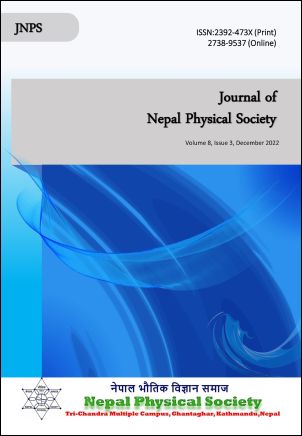Post Monsoon Season Spatial Distribution of Groundwater Depth over the Low-Lands of Sunsari District of Eastern Nepal
DOI:
https://doi.org/10.3126/jnphyssoc.v8i3.50723Keywords:
Spatial Distribution, Groundwater, Interpolation, Kriging, SemivariogramAbstract
The knowledge and an accurate representation of the spatial distribution of groundwater depth of an area are very important to realize sustainable use of groundwater resource, protection of ecosystem and for the development of adaptation policies in the changing climate. The present study has, thus, developed a groundwater depth distribution map of southern low-lands of the Sunsari District at the horizontal grid resolution of 3 km × 3 km. The groundwater depths were surveyed at predefined 82 numbers of geo-referenced grid points scattered over the region during the post monsoon season of the year 2019. Referencing the sampled depths, spatial distribution of the groundwater depth over the area has been predicted using the Ordinary Kriging Method. Three widely used Semivariogram modules such as Spherical, Exponential, and Gaussian were implemented. The Gaussian model of Semivariogram outperformed the other methods with R2 of 0.336, RMSE of 2.591, and MAE of 1.946. The predicted spatial distribution of groundwater depth reasonably well correlated with the observed distribution. The spatial distribution of groundwater level suggests that 12.36% the total area, particularly, over the western, southwestern and northern parts hold groundwater at much shallower depth (< 5 m). Over 51.59 % of the total area in the southeastern and northeastern parts, the groundwater level remained below 8 m from the ground and the rest of the total area holds the groundwater deeper than 8 m.
Downloads
Downloads
Published
How to Cite
Issue
Section
License
All right reserved. No part of this Journal may be reproduced in any form or by any electronic or mechanical means, including information storage and retrieval system, without permission in writing from the publisher, except by a reviewer who may quote brief passage in a review. The views and interpretation in this journal are those of author(s) and they are not attributable to the NPS.




